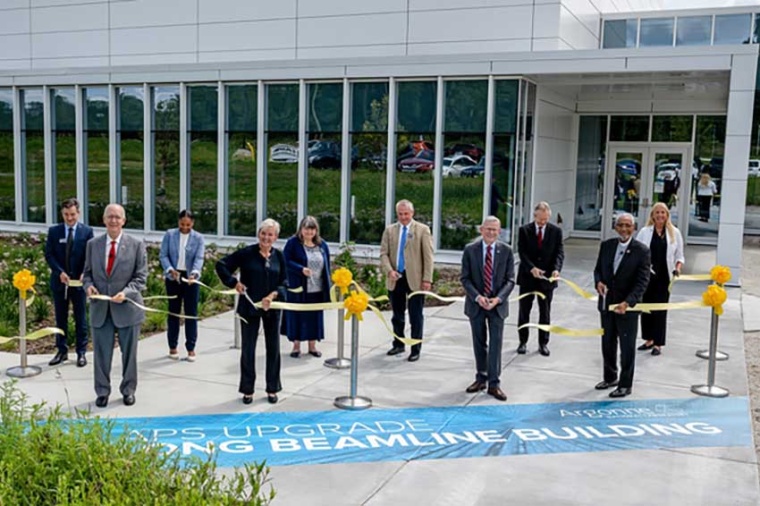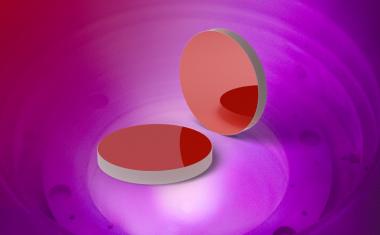Ribbon-cutting ceremony for Argonne’s new facility
The technology housed in the new Long Beamline Building will lead to more efficient solar cells, longer-lasting batteries, more durable materials for airplanes and much more.
US Secretary of Energy Jennifer Granholm and several Illinois leaders cut a ceremonial ribbon on Monday to mark the completion of a new facility that will host new experiments that will contribute to the future of electric vehicles, quantum computers and resilient materials for all kinds of uses.

The newly constructed Long Beamline Building (LBB) at the US Department of Energy’s (DOE) Argonne National Laboratory is an experiment hall that will become a part of the Advanced Photon Source (APS), a DOE Office of Science user facility. It will house two new beamlines that will transport ultrabright X-rays from the heart of the APS to cutting-edge scientific instruments.
This next generation of beamlines will be capable of providing high-resolution X-ray images of critical components and technologies from aircraft engines to solar cells to advanced materials for microelectronics, in clear detail and at impressively small scale.
The LBB is part of an 815 million dollar upgrade of the APS, one of the most productive X-ray light sources in the world. More than 5,000 scientists from around the globe use the APS in a typical year to conduct research in fields ranging from chemistry to life sciences to materials science to geology.
“When America leads on science, we boost our global competitiveness and we create jobs. President Biden believes that investing in science and innovation helps us tackle not only today’s greatest challenges, but tomorrow’s as well,” said Secretary Granholm. “The newly unveiled facility at Argonne National Lab’s Advanced Photon Source is exactly what scientific leadership looks like and DOE could not be more proud of the scientists, researchers, staff and students who lead this important work.”
US Representatives Bill Foster and Bobby Rush, Illinois State Senators Diane Pappas and Sue Rezin, Argonne Laboratory director Paul Kearns and dozens of scientists, engineers and APS team members joined Secretary Granholm for the occasion.
The APS upgrade will replace the facility’s 25-year-old electron storage ring, an extremely large and powerful scientific instrument, with a state-of-the-art ring that will increase the brightness of the X-rays generated by up to five hundred times. Several new beamlines will be constructed around the existing storage ring to facilitate a variety of research aims. The LBB will host two of them: The In Situ Nanoprobe (ISN) will be used to create longer-lasting batteries and other energy storage devices, better functional materials and more powerful catalysts to reduce carbon emissions. Its ability to examine samples in different environmental conditions at ultrahigh spatial resolutions will be unmatched in the United States. The High-Energy X-ray Microscope (HEXM) will offer extraordinary imaging capabilities for materials science, and will be used to, for example, improve the durability of materials used for airplane turbines, to prevent cracks and other defects from forming.
As the name implies, the beamlines housed in the LBB are unusually long. In fact, they’re about three times longer than those currently at the APS, sending photons further from the source to reach samples being analyzed. This distance (roughly two football fields in length) allows for more focused X-ray beams and helps scientists look at materials and processes in much greater detail.
The APS upgrade team received full occupancy of the LBB in June 2022 – on time and on budget. Work is now underway to build experiment stations for the new beamlines inside the building.
The LBB, which broke ground for construction in June 2020, remains the most outwardly visible portion of the APS upgrade project. To allow installation and commissioning of various components essential to the upgrade, the APS will pause operations for one year, starting in April 2023. When the light source returns in 2024 and experiments resume, the long beamlines in the LBB will be put to use immediately.











